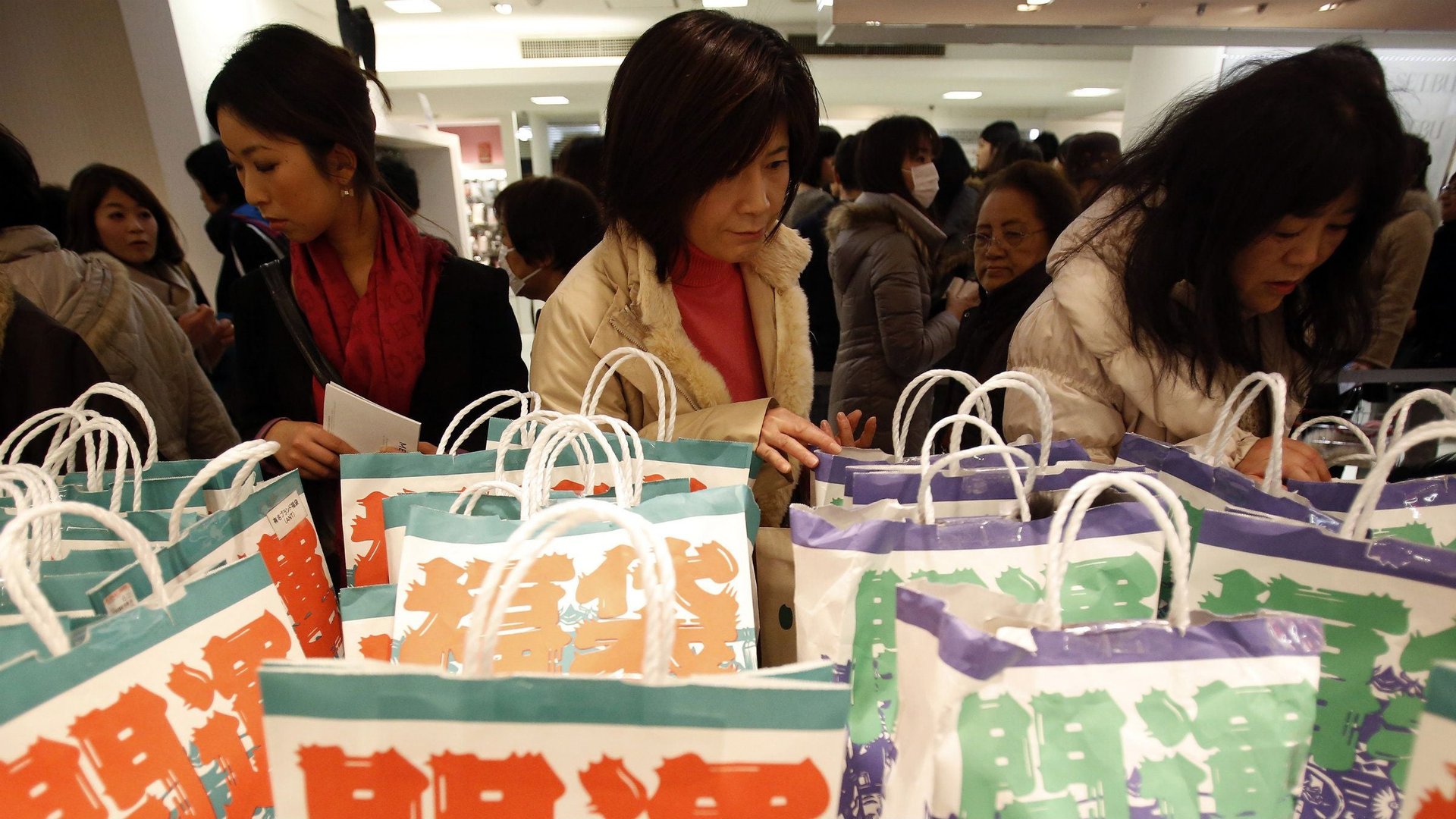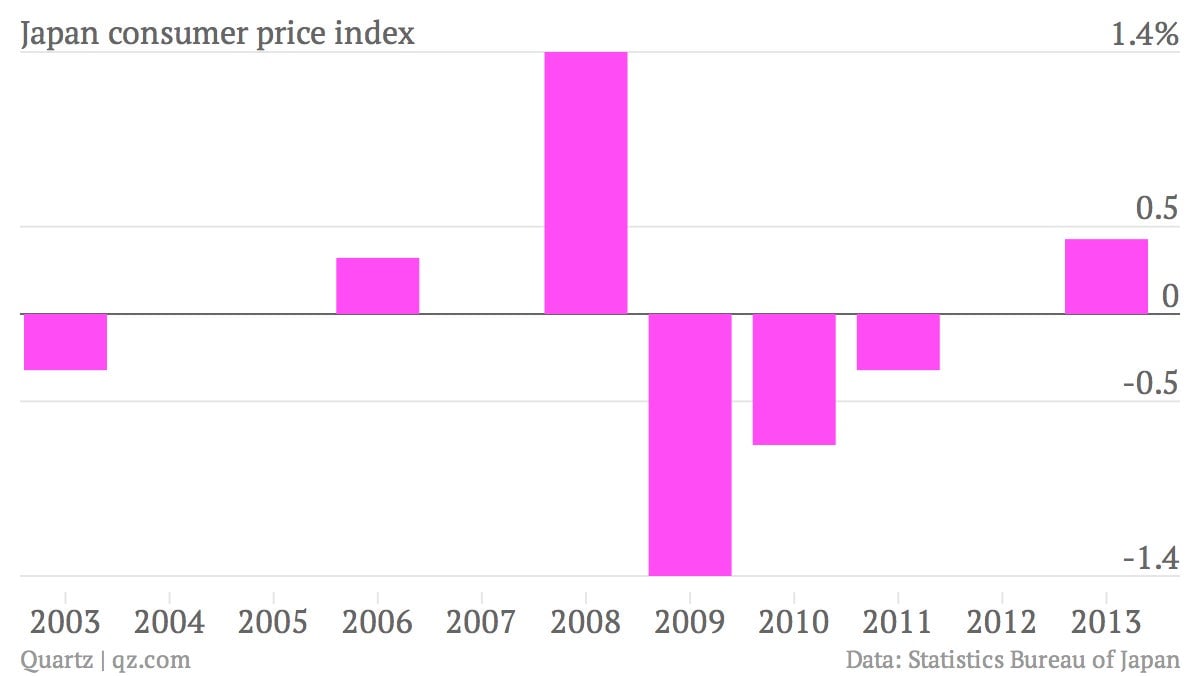Japan may be beating deflation but it’s losing the fight against falling wages
The good news for Japanese prime minister Shinzo Abe in his fight against deflation: Japan’s consumer price index, excluding volatile fresh food costs, increased by 1.3% in December, notching a 0.4% gain for 2013. (Inflation of about 2%, is the goal.) That makes last year the first time in five years that average annual prices of consumer goods have risen.


The good news for Japanese prime minister Shinzo Abe in his fight against deflation: Japan’s consumer price index, excluding volatile fresh food costs, increased by 1.3% in December, notching a 0.4% gain for 2013. (Inflation of about 2%, is the goal.) That makes last year the first time in five years that average annual prices of consumer goods have risen.

Putting an end to more than a decade of falling prices—which make debt burdens worse and dampen consumer spending—has been a key part of the stimulus policies known as “Abenomics.” But then there’s the bad news, for Abe and Japan’s workers alike: while prices are going up, wages still aren’t, despite the fact that Abe (like US president Barack Obama) has been pleading with businesses to pay their workers more.
According to data also released Jan. 31, average monthly income per household of workers was up 0.3% nominally, but when inflation is taken into account, wages actually fell 1.7% in 2013 from the year before. As a result, average spending per household was also down 2.3% in real terms.
This is part of an ongoing trend, as we’ve pointed out. Japanese wages have been falling an average of 0.8% a year since 2000. Moreover, Japan’s rising prices are expected to grow almost five times faster than wages.
Japanese officials seem to understand the danger of having stagnant incomes–it hurts the middle class, pushes those of lower-income brackets ever lower, and restrains the economy. But when officials finally implement a controversial sales tax hike to 8% from 5%, another worry may be whether Japanese citizens start protesting behind this apt slogan: “inflation without compensation.”